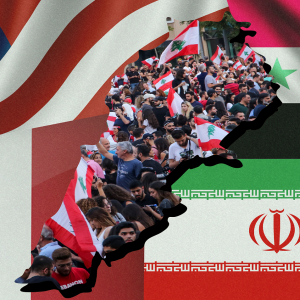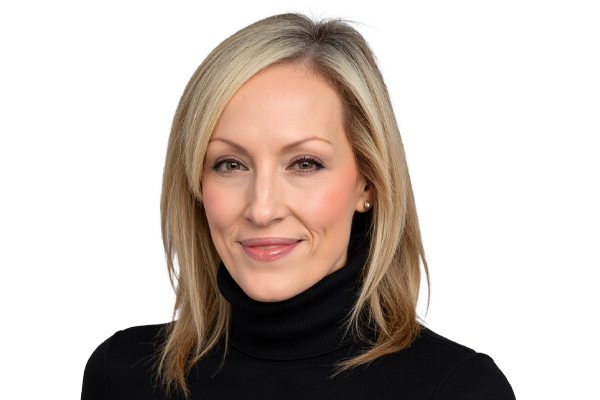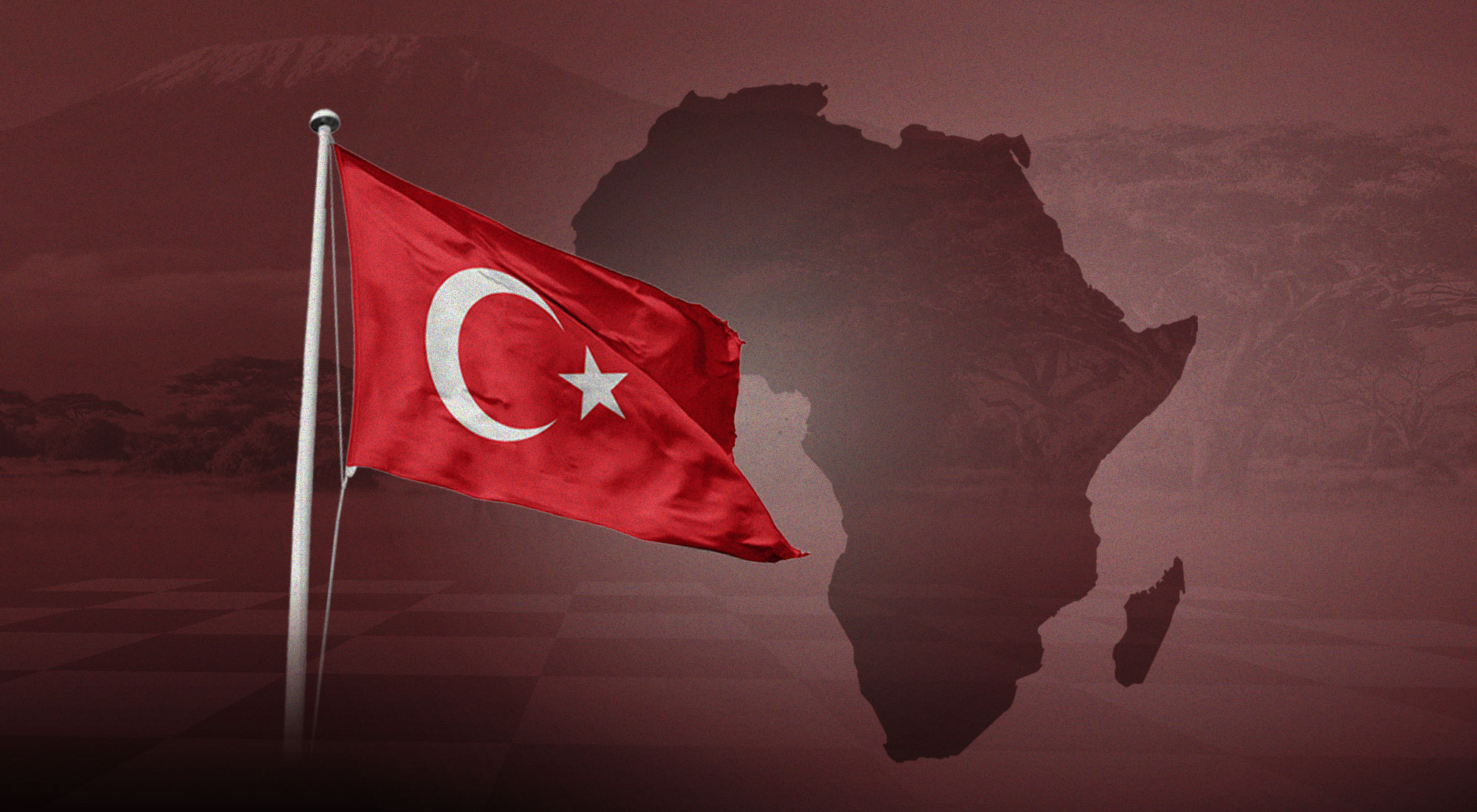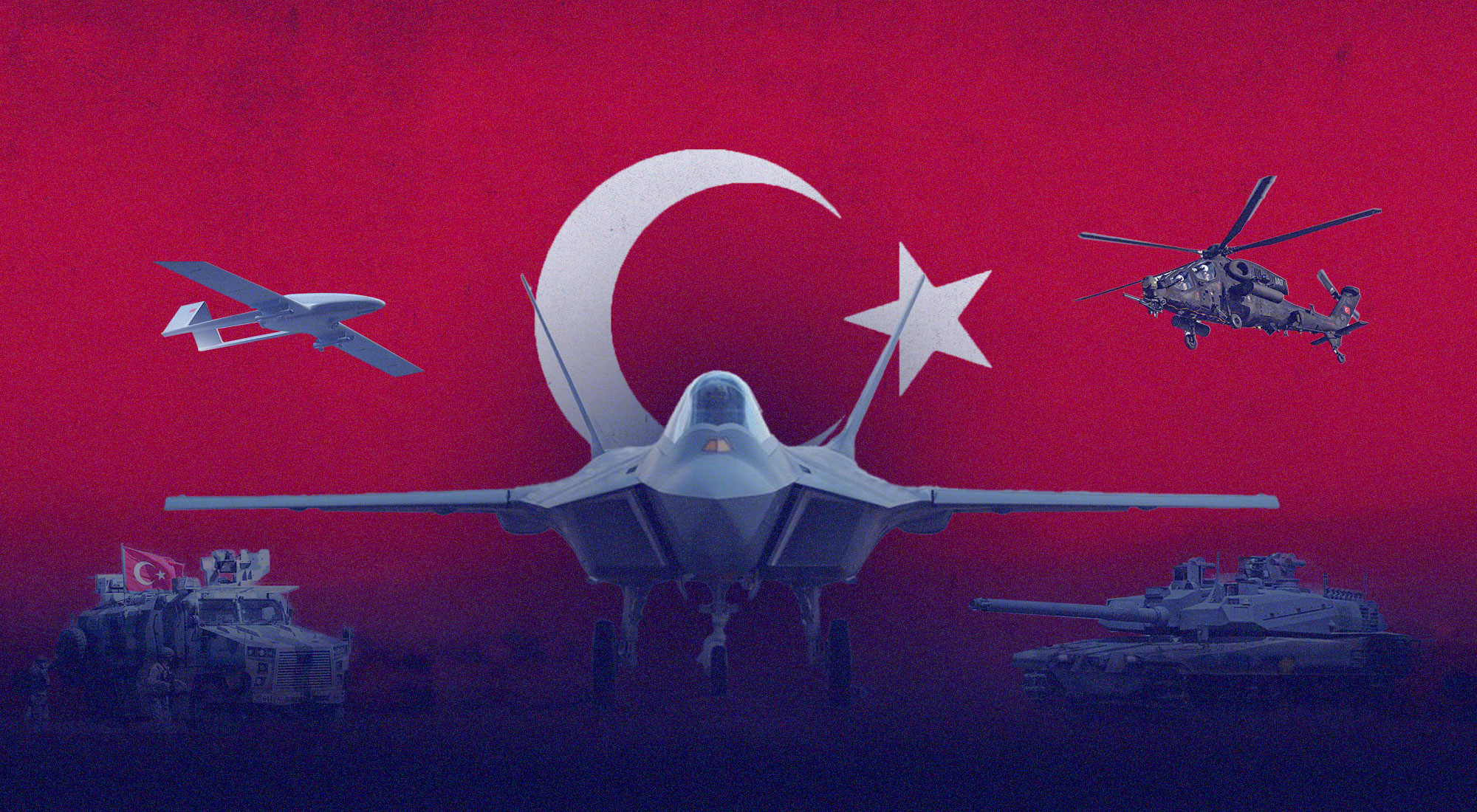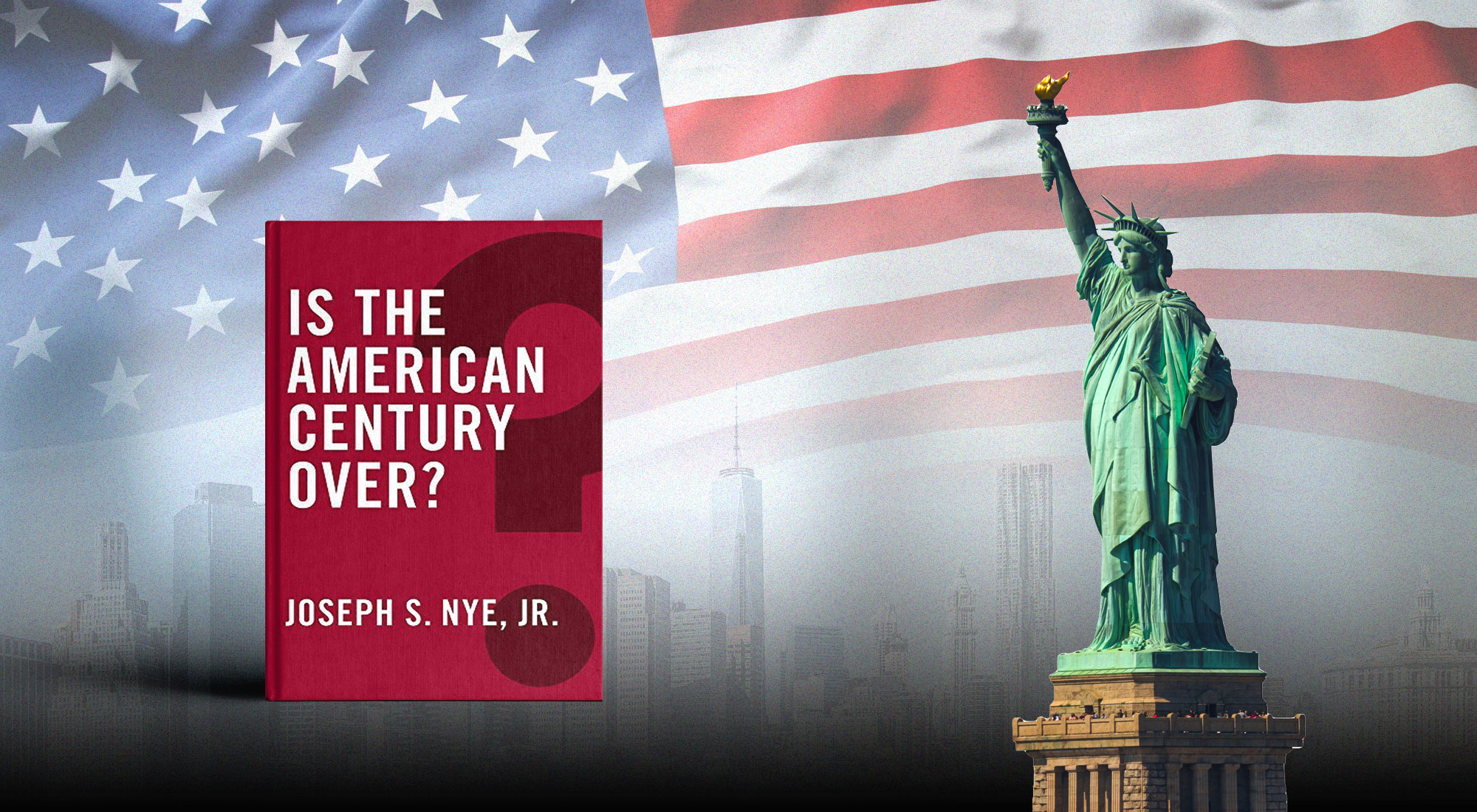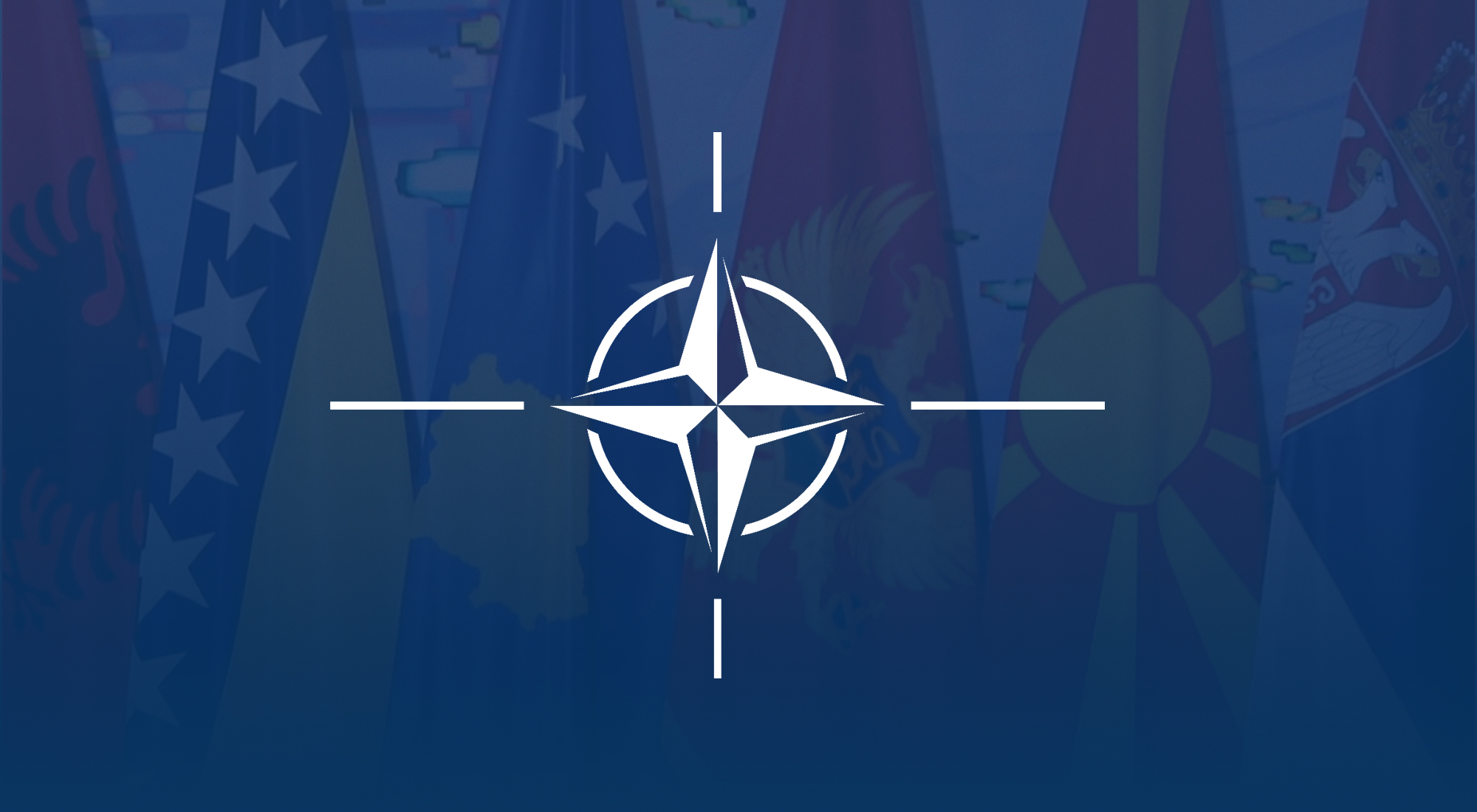Introduction: The emergence of Lebanese political discord
The commonplace belief in Lebanese society that ‘Lebanon’s wars are others’ wars on Lebanese soil’ [1] has evolved from decades of foreign intervention, which frequently impeded Lebanon’s ability to maintain its sovereignty. At any given moment in history, the country’s domestic and international positions have depended not on public opinion, but have been somewhat shaped by the interests of external powers who have exerted leverage by providing financial and political backing to Lebanon’s local actors and parliamentary elite. This convergence of external intervention shaping political ideologies has historically undermined Lebanon’s sovereignty by infringing foreign powers acting as the ‘ultimate arbiters’ [2] of Lebanon’s internal and external affairs. The inherent weakness of the Lebanese confessional political system accompanied by its centralized position in the Middle East has allowed Lebanon to become unwillingly exposed to regional conflict and vulnerable to outside influence.
The onset of Lebanon’s sectarian divide can be traced back to the state’s foundational period following its independence from the French mandate in 1943. Lebanon’s newly drawn borders include the population of Mount Lebanon, comprised of mainly Maronite Christians and Druze neighborhoods, and the coastal cities of Beirut, Tripoli, Sidon, and Tyre, which included Sunni and Shiite Muslim communities. The Christians envisioned a Democratic state with the French as their protectorate. At the same time, the Muslim communities favored an alliance with Syria with whom they had stronger cultural and religious ties – especially considering the Arab nationalist movement was sweeping through the region following World War I. This is seen as a critical juncture in the development of Lebanon’s initial identity whereby the two camps, known as Lebanism vs. Arabism, [3] were split on conflicting visions of what Lebanon should represent. The Lebanese camp ‘emphasized Lebanon’s Mediterranean, Phoenician heritage’ [4] and viewed Arab ‘Nationalism’ as a threat to its ‘ancient particularism;’ [5] i.e., a belief that their society has its unique history that universal laws cannot govern. Meanwhile, the Sunni camp believed that historically, Lebanon has always been closely akin to Syria, and its past – and future – should reflect this historical relation.
To unify the nation by acknowledging their differences, the country’s two main sects – the Maronites and the Sunni – devised an informal agreement that came to be known as The National Pact of 1943. The pact was considered a realpolitik, confessional approach to power-sharing by which the country’s recognized religious sects would hold a specific number of seats in Parliament, based on their share of the population. The 1932 census [6] thereby served as a balance between the “Lebanism” and the “Arabism” ideologies. The pact specified that the presidency would be held by a Maronite Christian (who at the time held the largest majority), the Prime Ministers Office would be represented by a Sunni Muslim, and the Speaker of Parliament represented by a Shiite Muslim – thus becoming the foundation for today’s parliamentary structure.
Because the pact was merely a ‘gentleman’s agreement,’ this led it to become inherently weak in terms of its governing authority, particularly hindering the efforts of the Maronites and Sunnis to collectively agree on the objectives of Lebanon’s new foreign policy. The main convergence between the two sects was their individual stances on the Palestinian cause. Lebanon’s Muslim community gave its unwavering support for the Palestinian Liberation Organization (PLO), favoring an Arab Nationalist/Pro-Palestinian position against Israel. [7] At the same time, the Christian population preferred to take a neutral position regarding the regional conflict.
The lasting impact of Lebanon’s civil war
As war ravaged the region during the 1960s and the 70s, a massive influx of Sunni Palestinian refugees migrated to Lebanon, challenging the Maronites’ demographic majority creating additional sectarian turmoil between the parties. The political instability resulting from Lebanon’s Civil War between 1975-1989 spurred a mass exodus of nearly 990,000 Lebanese citizens – roughly 40 percent of the population – most of whom were Maronites, ultimately decreasing their parities ‘political clout’ [8] in the country. Meanwhile, the Shiite population began to increase rapidly and is estimated to account for the largest demographic majority in Lebanon. [9] However, even today the Lebanese government has not conducted an updated census following the first round compiled by the French government in the early 1900s. An accurate account of today’s demographic figures would certainly upend the balance in Lebanon’s confessional parliamentary system based purely on decades-old population data. The reasoning behind such a decision stems from the intent to preserve Lebanon’s inconsistent fragile stability – essentially, the desire to maintain the status-quo has overshadowed accepting Lebanon’s demographic reality.
The spark igniting Lebanon’s Civil War was tied to the 1975 assassination attempt on Pierre Gemayel, founder of the right-wing Phalange Party, Lebanon’s most powerful Maronite political group. In retaliation, his supporters attacked a busload of Palestinian civilians, thus fanning the flames of a bloody 15-year war. Lebanon’s sectarian camps became deeply fractured, whereby the country’s governance came to a complete standstill, ultimately leaving Lebanon vulnerable to external forces. In 1976, as many as 30,000 Syrian troops intervened in the conflict at the request of the Maronite majority in Parliament. Unbeknownst to the Christians at the time, the troops would remain stationed in Lebanon for the next 29 years.
For Syria, troop mobilization was a multi-faced approach. First, Syria was concerned that Lebanon’s domestic conflict could create a spillover effect into their borders as they were also experiencing domestic Christian/Muslim hostilities. Second, Syria hoped to strengthen the Maronite government by acting as a counterweight to the Lebanese National Movement, a right-wing Muslim group and Palestinian sympathizer who were the Maronites’ strongest opposition during the Civil War. However, Syria’s underlying interest was to ensure the Palestinians did not defeat the Christians, resulting in Israel intervening on behalf of the Maronites. [10] Finally, Syria assumed their presence in Lebanon would deter an Israeli invasion, which undoubtedly was not the case. [11]
In 1978, Israel invaded Lebanon to combat the PLO who utilized Lebanon as its base to engage in cross-border clashes with the Israelis. At the same time, the Jewish state wanted to ensure the Syrian army does not gain a stronger foothold inside Lebanon. In 1982, Israel launched a second Lebanese invasion, occupying the south of Lebanon for nearly 20 years. Even though Israel drove Yasser Arafat, head of the PLO, out of Lebanon to Tunisia, where he re-established the group’s headquarters, [12] they were unable to deter the Syrian presence. Little did they realize the seismic ramifications of their long-term occupation in Lebanon would result in the birth of the militant group Hezbollah.
In particular, the harsh repercussions of the Civil War, particularly the impact of numerous external actors meddling in Lebanon’s affairs, impaired its ability to defend its sovereignty or implement independent foreign policy. By 1989, after 15 years of war resulting in 200,000 casualties, a peace process began with signing the Ta’if Agreement, a mediation orchestrated by the League of Arab States, led by Saudi Arabia and Syria. With the full support of the international community including backing from the United Nations Security Council, the accord included implementing a revised constitution, political reforms, and adjusted Lebanon’s confessional system, however this time providing the Muslim majority with greater political powers.
Most notably, the Ta’if Agreement designated Syria as Lebanon’s Arab powerbroker. This turn of events stated Syria’s military presence in Lebanon, then considered necessary to ensure peace and stability following the Civil War as unresolved tensions remained high between Lebanese sectarian groups. The agreement, however, did not impose restrictions on Syria’s ability to influence Lebanese politics. Their occupation resulted in the Syrians becoming deeply entrenched in Lebanese domestic affairs and its foreign policy to such an extent that their presence jeopardized Lebanon’s ability to self-govern and prevail as an independent, sovereign state.
While the Ta’if Agreement called for a dismantling of local militias, Hezbollah refused, stating their purpose was to deter and remove Israel’s occupation in the south of Lebanon, claiming their presence should be viewed as an accompaniment to the Lebanese Armed Forces. At the same time, the Shiite powers in Iran began funding and training Hezbollah’s militants to expand their influence in the region. Emboldened with the support from Syria and the financial backing from Iran, Hezbollah emerged as one of the region’s most influential Shiite resistance movements while pledging its full support to Iran’s Supreme Leader. Although the Ta’if Agreement brought an end to the bloodshed, it’s a prime example of the external forces’ ability to manipulate Lebanese politics and how dominant regional actors played a pivoting role in influencing Lebanon’s foreign policy. [13]
After 15 years of occupation, both international and domestic pressure weighed heavily on Syria to withdraw its forces from Lebanon. The United States ‘war of terror’ campaign following 9/11 and the Iraq War in 2003 created tension between the US and Syria, particularly escalating after the Syrian regime, who publicly opposed the war, threw its support behind anti-US armed militias in Iraq. The US accused Syria of smuggling weapons and sending jihadi militants to Iraq to fight against the US military presence. As pressure mounted between Washington and Damascus, the US Congress passed the Syria Accountability and Lebanese Sovereignty Restoration Act in 2003 that ordered Syrian military withdrawal from Lebanon. [14] Simultaneously, the UN passed UNSCR 1559, a French-sponsored resolution calling for Syrian withdrawal from Lebanon and disarming Hezbollah.
Meanwhile, the domestic pressure for Syrian withdrawal came to a boiling point after the assassination of Lebanon’s former Prime Minister Rafik Hariri in February 2005, one of Lebanon’s most vehement Syrian critics and Saudi Arabia’s closest political ally in Lebanon. [15] While the majority of Lebanese people concluded Syrian intelligence was behind the car bomb killing Hariri, [16] Saudi Arabia viewed his murder as a means of undermining their influence in Lebanon and concluded Syria’s hegemony in Lebanon was all but finished. In the following weeks, over one million peaceful protestors took to the streets demanding an end to the occupation, which came to be known as the Cedar Revolution. Coupled with intense international pressure, Syria reluctantly agreed on March 2, 2005, to conclude its presence in Lebanon.
Under pressure from the international community for an independent investigation into Hariri’s murder, the UN Security Council adopted Resolution 1664, [17] which called for Special Tribunal for Lebanon (STL), a judicial organization comprised of Lebanese and international judges whose objective was to hold trials for those associated with the murder of Hariri and 21 others killed in the blast. In August 2020, after 13 years of investigation, the STL judges delivered a guilty verdict for Salim Ayyash, a mid-level Hezbollah operative. They acknowledged that while Hezbollah and the Syrian regime had the motivation to eliminate Hariri, there was insufficient evidence to hold either party’s leadership accountable. The announcement was delivered when Lebanon was struggling with multiple crises. The Beirut port explosion occurred two weeks prior, coinciding with a crippling Covid-19 pandemic. While the outcome was a disappointment for Hariri supporters, many feared that justice for his death would only come at the ultimate price – a civil war. This was to be a cost too high for many during such a volatile period.
Following Hariri’s death, a political manifestation started to take shape as the country split into two blocs: the Shiite-led, pro-Syrian March 8 Alliance and the Sunni/Maronite/Druze-led, anti-Syrian March 14 Alliance whose nicknames were derived from the dates in which each respective group held massive protest rallies. The March 14 coalition opposes Syrian influence and calls for stronger ties with the West, mainly France and the US, and maintaining friendly ties with the Gulf countries, particularly Saudi Arabia. Conversely, the March 8 Alliance called for normalized relations with Syria. It strongly opposed US influence in the region particularly its support of the March 14 Alliance, whom Hezbollah feared would act as a ‘subcontractor’ to implement Israeli policy in Lebanon. [18] The differences in the fundamental political ideology between the two camps continue to contradict Lebanon’s ability to formulate foreign policy decisions and sustain its inability to define a national identity even to this day.
Lebanon’s contradictory foreign alliances
United States
Although Lebanon’s imposing external actors operate in their foreign policy interests, those interests can occasionally overlap with other external forces. In the case of the United States, its policy toward Lebanon aims to deter Syrian and Iranian influence – both politically and financially and combatting the efforts of extremist groups such as Al-Qaeda and ISIS from targeting Lebanon causing further destabilization of the region. Since 2006, the US has provided more than $2 billion in bilateral security aid to the Lebanese Armed Forces (LAF) to counter violent extremism while ensuring the LAF has the resources, equipment, and technology to maintain tight control over its border with Syria. [19]
From one perspective, the contribution of US security aid to the LAF can be seen as a successful mechanism to promote US interests abroad by safeguarding regional security. Throughout the turbulent years of one domestic crisis after another, the LAF emerged as the sole guarantor of the country’s security as it’s viewed both in Lebanon and abroad as the only respected national institution capable of preserving stability, particularly now while domestic tensions remain high. By ensuring the LAF remains operational, the US can avoid direct military intervention in the event of civil or regional escalations. [20] However, more importantly for the US, if the LAF were unable to maintain its authority in Lebanon, Hezbollah in effect would ascend as the ‘sole effective military force in the country,’ [21] which would be a point of contention regarding US policy in the region.
During the early days of Hezbollah’s mobilization in the 1980s, the militant group penned a document labeled the ‘Open Letter’ detailing its modus operandi and guiding principles to include the destruction of the Jewish state and the liberation of Jerusalem. [22] Today, Hezbollah’s weapons arsenal is estimated to be the largest in the world for any non-state actor [23] and is believed to have the capabilities to produce precision-guided missiles (PGMs) locally. [24] These factors have been a major security concern for the US, considering not only Hezbollah’s geographical proximity to Israel but more importantly, its ambition to attack Israel – a key regional US ally. [25]
However, from a different context, given that Hezbollah has established itself as a strong political player in Lebanon, one with de-facto veto power, the LAF has remained somewhat unwilling to counter Hezbollah as they engage in ‘provocative actions with Israel, risking unpredictable escalatory actions,’ which would undermine Lebanon’s fragile stability. [26] The US considers its strategic partnership with the LAF to represent the ‘backbone of its influence in Lebanon.’ [27] Yet, the LAF’s refusal to censure Hezbollah over its brazen behavior and an extensive stockpile of Iranian weapons have more to do with its concern over sparking internal conflict or retaliation from Hezbollah – which it is inclined to avoid at all costs.
Besides stoking conflict, the LAF’s hesitancy to intervene also lies in its ‘fears of being seen as violating its principles of and reputation for neutrality.’ [28] The LAF’s reluctance to maintain any sort of authority over Hezbollah’s behavior, particularly when it can undermine Lebanon’s stability, leaves policymakers in Washington questioning whether their inaction may endanger future US funding for Lebanon. [29] On the contrary, sustaining US strategic military support for the LAF would only further counterbalance Hezbollah’s argument that itself – and Iran – are the only reliable means to ensure Lebanon’s stability.
France
Similar to the US, France is also one of Lebanon’s primary political partners. Like that of the US, French aid is provided directly to the Lebanese Armed Forces with the intent to reinforce institutions, bolster internal security, and ensure secure borders. Following the Beirut port blast in August 2020, French President Emmanuel Macron was the first foreign leader to visit Beirut to survey the damage. Besides immediately airfreighting medical equipment and food, France also mobilized doctors and nurses to administer medical support for the nearly 7,500 injured. While some critics claim Macron’s visit symbolized a ‘neocolonialist foray by a European leader seeking to restore sway over a troubled Middle Eastern land,’ [30] it is also important to recognize that many in Lebanon have long prided themselves on their francophone identity and that the prompt French reaction is more likely tied to the countries long-standing mutual interests as well as their robust economic and cultural relationship.
Weeks after the blast, Macron announced the French ‘roadmap to recovery,’ a detailed action plan that the government must abide by to unlock foreign aid vital to repairing political and economic infrastructure. The plan outlines specific criteria, including forming an independent government, restarting negotiations with the IMF, a complete audit of the central bank, and judicial form [31] – all within a specified deadline. Otherwise, as Macron warned the Lebanese leadership, ‘deliver on reforms by the end of October or face sanctions.’ [32] Macron’s firm rhetoric further fueled speculation that the directive would revive France’s protectorate role in Lebanon. [33]
For the March 14 bloc, the West’s security interests in Lebanon benefit their internal position. By band-wagoning with the US and France who have permanent seats on the UN Security Council, March 14 can utilize their ties with the West to isolate Lebanon from Syrian interference further, diminish Hezbollah’s armaments, and at the same time maintain their ‘political legitimacy and fulfill its responsibilities as leaders of the country.’ [34] One such instance, the UNSC Resolution 1701, called for the ceasefire between Hezbollah and Israel during the 2006 war, the disarming of all militant groups in Lebanon, and establishing that no foreign forces may mobilize in the country without the consent of the government. [35]
Iran
On the contrary, Iran has less of an interest in stabilizing Middle East security and instead uses its regional armed networks, including Hezbollah in Lebanon, the Houthis in Yemen, Kataib Hezbollah in Iraq, and Hamas in the Palestine territories – to name a few, to reinforce and sustain its regional, expansionist aspirations. By training and funding such militant groups to attack its enemies on their behalf, Iran is able to scapegoat culpabilities, all the while bolstering ‘the country’s drive for regional hegemony and to remove Western powers.’ [36] Out of all the Iranian proxies, Hezbollah has transformed itself from an underground ‘Iranian-backed militia’ in the 1980s to an influential mainstream player in contemporary Lebanese politics today – an evolution known as the ‘Lebanonization of Hezbollah.’ Moreover, Hezbollah is considered the primary representative of Lebanon’s Shiite community, which also holds the largest demographic majority in the country. After rising to power in 1992, Hezbollah’s Secretary-General, Hassan Nasrallah, understood that it must sustain continual popular support from Lebanon’s Shiite society to ensure the regime’s longevity.
To strengthen its ability to mobilize, Hezbollah began implementing a vast network of social and welfare programs that tightly engrained its presence in the Shiite community. Many of these programs focused on aiding the families of its martyrs and active combatants, the families of those detained in Israeli prisons, or people injured from conflict with Israel. Besides direct support to those who dedicated their lives to the Resistance, Hezbollah also began to weave itself into society by funding schools and hospitals, providing infrastructures such as paving roads, supporting local farmers including training and support, even going as far to build sports centers and vacation resorts, [37] living up to its portrayal of a ‘state within a state.’ Hezbollah’s implementation of such projects has been crucial in cultivating popular support from both Shiite, and non-Shiite’s in Lebanon while ‘compounding the challenges of limiting Hezbollah’s influence’ [38] for the West, particularly the United States.
Following the Israeli invasion of Lebanon in 1982, which initially propelled the militant wing of Hezbollah, Iran has regarded the group as its first line of defense against its perceived threats from the Jewish state. Acting as the militant’s groups primary financial backer, it is estimated that Iran transfers nearly $800 million annually to Hezbollah – equating to roughly 75 percent of its yearly budget. [39] In addition to providing financial and logistical support, [40] Iran is also Hezbollah’s main supplier of weapons. Arms transfers from Iran have helped to expand Hezbollah’s massively equipped arsenal, which is estimated to include nearly 130,000 [41] land-attack missiles and rockets.
Syria
The essential logistic lifeline between Iran and Hezbollah is Syria – considering the roads that lead from Persia to Lebanon have no other alternative than to bypass Syrian territory. Without a Syrian entry and exit, Iran would have no other means to transport its weapons to Hezbollah. This enterprise continuously receives its blessing from Syrian President Bashar Al Assad. In return, Syria greatly benefits from the partnership in terms of militarized and logistical support from Hezbollah and the Islamic Revolutionary Guard Corps (IRGC). Following the Syrian unrest in 2011, both groups had instrumental militarized roles in suppressing the uprising with the intent to preserve the Assad regime in Syria.
The Syrian regime’s survival is key for Assad, Iran, and Hezbollah. Assad utilizes his relationship with the militant group by providing a safe haven for Hezbollah’s training camps along with authorizing the transshipment of armament from Iran via Syria. In return, Syria has received military training from the IRGC as well as ‘political, financial, and cyber support’ [42] from the Iranian government, which helps insulate Assad’s grip on power and to ‘balance against Iran’s main adversaries, including the United States, Israel, and Saudi Arabia.’ [43]
For its part, Hezbollah has played a significant role in expelling Syrian opposition forces [44] from the country and advising the Syrian government on methods of prosecuting counterinsurgency [45] during the uprising. Ultimately, regime change in Syria would be detrimental to Hezbollah’s existence. For instance, assuming a Sunni government was installed in Assad’s place, particularly one with friendly ties to Saudi Arabia, the result would certainly curtail Iranian arms transfers and eventually undercut Hezbollah’s militarized hegemony in Lebanon.
In Lebanon, the reactions to Hezbollah’s involvement in the Syrian Civil War varied among the country’s diverse sects. The Shiite community lauded the group’s efforts, mainly ‘given the sectarian nature of the fighting in Syria,’ [46] while the Sunni reaction was far less admiring considering the Assad regime specifically threatened Sunni Muslims. Regionally, Hezbollah’s intervention in Syria damaged its reputation as the ‘champion of anti-Israel resistance,’ [47] particularly as Hezbollah’s participation in the war was contradictory to its ideological dogma. [48] Yet the biggest concern for many Lebanese was that Hezbollah’s involvement in the war was considered a breach of the Baabda Declaration of 2012, an agreement between Lebanon’s leadership to prevent any Lebanese national from taking part in the war. Whether siding with the opposition or with the regime, the agreement intended to shield Lebanon from a spill-over effect from Syria’s war.
Conclusion
Today, as the Lebanese economy spirals into collapse, the term ‘failed state’ seems to become synonymous with Lebanon. After decades of political mismanagement, the Lebanese currency has lost nearly 90 percent of its value, inflation has reached 400 percent, and more than half of Lebanon’s citizens live below the poverty line. Yet Lebanon’s collapse did not derail overnight. Instead, Lebanon’s deconstruction has been decades in the making due to its pursuit of sectarian purpose rather than congruent policy that benefits Lebanon’s collective national interest. Trying to make sense of how Lebanon arrived at this fractured state depends on the person you ask and most certainly, depending on their party, will blame the other.
While some will say, Hezbollah took the country hostage by intervening in Syria’s civil war, an engagement that had more to do with Assad regime survival in place of Lebanon’s foreign policy objectives. The repercussions of such an adventurous foreign policy on behalf of Hezbollah’s interest-led Lebanon’s Western and Arab Gulf allies to re-examine bailout options for the Lebanese economy. The GCC states, in particular, have both deep coffers and a willingness to assist their brothers in need, yet have repeatedly cautioned Lebanon to avoid allowing Hezbollah, whom they consider to be an ‘army within a state,’ [49] to dictate the countries policy abroad. Otherwise, such continued actions would affect regional relations and jeopardize the vital Gulf deposits into Lebanon’s central bank, which bankrolled the Lebanese economy since the end of the Civil War.
Today’s hyperinflation in Lebanon is directly linked to both a decline in foreign aid as well as the unavailability of foreign currency. Observing the rising Iranian influence in Lebanon, particularly its financial and militarized support in mobilizing Hezbollah, the Arab Gulf states began withholding their generous foreign deposits critical in stabilizing the Lebanese Lira for years.
Prime Minister Saad Hariri attempted to dig Lebanon out from its constitutional crisis with his efforts to form a new government after the previous Premier, Hassan Diab’s cabinet, resigned following the Beirut Port explosion last August. While trying to appease his Sunni allies by installing a technocratic government at the request of the French government to unlock critically needed foreign aid, Hariri’s critics in Lebanon allege he is responsible for promoting a ‘neoliberal vision of the state and for not breaking with the “clientelistic” tradition. [50] Complicating the political gridlock is the prerequisite of a forensic audit of Lebanon’s Central Bank, a compulsory request from the UN, France, and the US to receive economic aid and bailout funds from the IMF. The concern for many political players in Lebanon – along with their foreign associates – is that the audit would expose the timeline of their involvement in the systematic financial corruption [51] of Lebanon’s banking system. An estimated $7 to $8 billion have been illegally smuggled from the country, [52] severely aiding Lebanon’s economic free-fall.
For Lebanon to consider reconstruction, it first needs to come to terms with its past, resolving not to let history repeat itself yet again. Lebanon historically grappled with defining its national identity –the consequence of which has resulted in decades of sectarian divide and foreign domination. Lebanon lacks a cohesive vision for the future, one that supersedes its sectarian divides and rallies against defending Lebanon’s sovereignty while ensuring a prosperous future for all Lebanese citizens, not just its political elite. Echoes of such unity were on display during Lebanon’s October Revolution in 2019. The country witnessed a massive wave of peaceful protests, including hundreds of thousands of citizens from all faiths and backgrounds demanding accountability and justice for Lebanon’s financial and political failures.
The mass movement became synonymous with the protest chant ‘kelon ya’neh kelon translated in English as “all of them means all of them,” signifying the protestors blame Lebanon’s downfall on all of its political leadership, regardless of the sect. [53] This was seen as a significant reversal for many Lebanese who have remained loyal to their political parties for decades. Yet, for the revolution’s momentum to mobilize, electoral amendments must be made, allowing their demands to manifest from voice to action.
Genuine change can only occur if legislative and electoral reforms are addressed, particularly overhauling Lebanon’s antiquated sectarian system, which would allow for a ‘gradual separation between politics and religion.’ [54] The upcoming 2022 elections in Lebanon would be a prime opportunity for the country to hit the re-set button, particularly in addressing election reform. Lebanon’s current election laws leave independent candidates at a disadvantage if they cannot garner a majority in specific multi-sect districts or by intentionally ‘snubbing’ the larger blocs, choosing not to be part of their ticket-making electability for outsiders extremely difficult. By modernizing election laws, Lebanon’s next generation of independents and revolutionaries would gain equal access to the electoral process.
Imminent state collapse should act as the catalyst for Lebanese factions to unite under one consolidated national identity that leverages its diversity in one collective voice demanding political reform while renouncing the efforts of external forces who continually exploit Lebanon’s flawed political process in the interest of their own political agendas. If left unchecked, Lebanon will remain susceptible to further instability, especially as civil unrest continues to build momentum. The worst-case scenario is falling victim to extremist factions who exploit Lebanon’s vulnerability and spurring chaos in an already volatile environment.
References:
[1] Aurelie Daher. 2014. Hezbollah: Mobilization and Power, Hurst & Company, London.
[2] Bassel F. Salloukh. 2009. The Foreign Policies of Arab States: The Challenge of Globalization, American University in Cairo Press, p. 284.
[3]Bassel F. Salloukh. 2019. The Foreign Policies of Arab States: The Challenge of Globalization, American University in Cairo Press, p. 284-285.
[4]Ibid.
[5] Kais M. Firro. 2004. ‘Lebanese Nationalism versus Arabism: From Bulus Nujaym to Michel Chiha,’ Middle Eastern Studies, Vol. 40, No. 5, pp. 1-27.
[6] Farid el-Khazen. 1991. ‘The Communal Pact of National Identities: The Making and Politics of the 1943 National Pact,’ Centre for Lebanese Studies, p. 4, http://lebanesestudies.com/wp-content/uploads/2012/03/8b844d712.-The-Communal-Pact-of-National-Identities-The-Making-and-Politics-of-the-1943-National-Pact-Farid-el-Khazen-1991.pdf
[7] Ibid.
[8] Migration Policy Centre Robert Schuman Centre for Advanced Studies. 2017. ‘Migration Profile: Lebanon,’ European University Institute, https://cadmus.eui.eu/bitstream/handle/1814/46504/RSCAS_PB_2017_12_MPC.pdf?sequence=1
[9] Corey Flintoff. 2007. ‘Sectarian Divide Hampers Lebanese Election Process,’ NPR, https://www.npr.org/templates/story/story.php?storyId=14989532
[10] Abbas Assi. 2016. Democracy in Lebanon, I.B. Tauris.
[11] Esther Pan. 2005. Middle East: Syria and Lebanon, Council on Foreign Relations, https://www.cfr.org/backgrounder/middle-east-syria-and-lebanon
[12] ‘1982: PLO leader forced from Beirut.’ 1982. BBC News, http://news.bbc.co.uk/onthisday/hi/dates/stories/august/30/newsid_2536000/2536441.stm
[13] Esther Pan. 2005. Middle East: Syria and Lebanon, Council on Foreign Relations, https://www.cfr.org/backgrounder/middle-east-syria-and-lebanon
[14] Abbas Assi. 2016. Democracy in Lebanon, I.B. Tauris.
[15] Nicholas Blanford. 2006. Killing Mr. Lebanon. I.B. Tauris, p. 148.
[16] Bassem Mroue. 2020. ‘UN-backed court to issue verdicts in Lebanon’s Hariri case,’ AP News, https://apnews.com/article/netherlands-united-nations-international-news-trials-middle-east-ed48ffe5c89fcd9785684a18b41f214d
[17] United Nations Security Council. 2006. ‘Resolution 1664,’ http://unscr.com/en/resolutions/doc/1664
[18] Aurelie Daher. 2014. Hezbollah: Mobilization and Power, Hurst & Company, London.
[19] United States Department of State. 2020. ‘US Relations With Lebanon’ https://www.state.gov/u-s-relations-with-lebanon/
[20] Zachary Karabatak. 2019. ‘The US finally released military aid to Lebanon. Here’s what it will — and won’t — achieve’ The Washington Post,’ https://www.washingtonpost.com/politics/2019/12/09/us-finally-released-military-aid-lebanon-heres-what-it-will-wont-achieve/
[21] Nicholas Blanford. 2020. ‘The US military assistance program to the Lebanese Armed Forces must endure,’ Atlantic Council, https://www.atlanticcouncil.org/blogs/menasource/the-us-military-assistance-program-to-the-lebanese-armed-forces-must-endure/
[22] Nicholas Blanford. 2015. ‘Lebanon: The Shiite Dimension,’ Wilson Center, https://www.wilsoncenter.org/article/lebanon-the-shiite-dimension
[23] Shaan Shaikh and Ian Williams. 2018. ‘Hezbollah’s Missiles and Rockets,’ Center for Strategic and International Studies, https://www.csis.org/analysis/hezbollahs-missiles-and-rockets
[24] United States Department of State. 2019. ‘Country Reports on Terrorism, Bureau of Counterterrorism, https://www.state.gov/reports/country-reports-on-terrorism-2019/
[25] James Mc Auley, Liz Sly, and Karen DeYoung. 2019. ‘US voices support for Israel as war fears rise in the Middle East,’ Washington Post, https://www.washingtonpost.com/world/middle_east/israel-unveils-details-of-iranian-backed-missile-operation-in-lebanon/2019/08/29/84aef8f6-ca63-11e9-9615-8f1a32962e04_story.html
[26] ‘Statement of General Joseph L. Votel, Commander, US Central Command
before the Senate Armed Service Committee on the Posture of US Central Command Great Power Competition: The Current and Future Challenges in the Middle East.’ 2019. US Central Command, https://www.centcom.mil/Portals/6/Documents/Transcripts/Votel020519.pdf
[27] Ibid.
[28] Hijab Shad and Melissa Dalton. 2020. ‘Playing Politics: International Security Sector Assistance and the Lebanese Military’s Changing Role,’ Carnegie Middle East Center, https://carnegieendowment.org/files/Shah_Dalton_-__Lebanon_Security_Assistance.pdf
[29] Bradley Bowman. 2020. ‘Lebanese Armed Forces Must Act Against Hezbollah to Retain American’s Military Aid,’ Defense News, https://www.defensenews.com/opinion/commentary/2020/04/01/lebanon-must-act-against-hezbollah-to-retain-americas-military-aid/
[30]Angela Charlton and Sarah El-Deep. 2020. ‘Is France helping Lebanon, or trying to reconquer it?’ Washington Post, https://www.washingtonpost.com/world/middle_east/is-france-helping-lebanon-or-trying-to-reconquer-it/2020/08/08/3b582afe-d94b-11ea-a788-2ce86ce81129_story.html
[31] International Crisis Group. 2020. ‘How Europe can help Lebanon overcome its economic implosion,’ https://www.crisisgroup.org/middle-east-north-africa/eastern-mediterranean/lebanon/219-how-europe-can-help-lebanon-overcome-its-economic-implosion
[32] Tom Perry and Raya Jalabi. 2020. ‘French roadmap sets blistering pace for Lebanon to change course. Reuters, https://www.reuters.com/article/us-lebanon-crisis-government-idUSKBN25T2M1
[33] Middle East Political and Economic Institute. 2020. ‘Emmanuel Macron Has Sent A Roadmap To Lebanon Outlining Political And Financial Reforms,’ https://mepei.com/emmanuel-macron-has-sent-a-roadmap-to-lebanon-outlining-political-and-financial-reforms/
[34] Lynn Zovighian. 2008. ‘Lebanon is Not Two Camps Part 2,’ Middle East Institute, https://mei.edu/publications/lebanon-not-two-camps-part-2
[35] United Nations Security Council. 2006. ‘Resolution 1701,’ https://www.un.org/press/en/2006/sc8808.doc.htm
[36] Kali Robinson. 2021. ‘Iran’s Regional Armed Network,’ Council on Foreign Relations, https://www.cfr.org/article/irans-regional-armed-network
[37] Aurelie Daher. 2014. Hezbollah: Mobilization and Power, Hurst & Company, London.
[38] Carla E. Humud. 2021. ‘CRS Report: Lebanon,’ Congressional Research Service, https://fas.org/sgp/crs/mideast/R44759.pdf
[39] Yaya J. Fanusie and Alex Entz. 2017. ‘Hezbollah – Financial Assessment,’ Center on Sanctions & Illicit Finance, https://s3.us-east-2.amazonaws.com/defenddemocracy/uploads/documents/CSIF_TFBB_Hezbollah.pdf
[40] Nicholas Blanford. 2015. ‘Lebanon: The Shiite Dimension,’ Wilson Center, https://www.wilsoncenter.org/article/lebanon-the-shiite-dimension
[41] Shaan Shaikh. 2019. ‘Missiles and Rockets of Hezbollah,’ Missile Threat, Center for Strategic and International Studies, https://missilethreat.csis.org/country/hezbollahs-rocket-arsenal/
[42]Seth G. Jones and Maxwell B. Markusen. 2018. ‘The Escalating Conflict with Hezbollah in Syria,’ Center for Strategic & International Studies, https://www.csis.org/analysis/escalating-conflict-hezbollah-syria
[43] Ibid.
[44] Daniel Benjamin and David Cohen. 2012. ‘Briefing on the Designation of Hezbollah for Supporting the Syrian Regime,’ United States Department of State, https://2009-2017.state.gov/r/pa/prs/ps/2012/08/196335.htm
[45] Ibid.
[46] Daniel L. Byman. 2016. ‘Is Hezbollah Less Dangerous to the United States?’ Brookings, https://www.brookings.edu/blog/markaz/2016/10/18/is-hezbollah-less-dangerous-to-the-united-states/
[47] Nicholas Blanford. 2015. ‘Lebanon: The Shiite Dimension,’ Wilson Center, https://www.wilsoncenter.org/article/lebanon-the-shiite-dimension
[48] Stephanie Khouri. 2021. ‘How the Syrian war transformed Hezbollah,’ L’Orient Today, https://today.lorientlejour.com/article/1255945/how-the-syrian-war-transformed-hezbollah.html
[49] Najia Houssari. 2020. ‘US, UAE warn Lebanese government over Hezbollah ties,’ Arab News, https://www.arabnews.com/node/1695486/middle-east
[50] Anthony Samrani. 2020. ‘How Lebanon sank so deep…’ L’Orient Today, https://today.lorientlejour.com/article/1224409/how-lebanon-sank-so-deep.html
[51] Kareem Chehayeb. 2021. ‘Why Does the International Community Want Lebanon to Audit its Central Bank?’ The Tahrir Institute for Middle East Policy, https://timep.org/commentary/analysis/why-does-the-international-community-want-lebanon-to-audit-its-central-bank/
[52] Osama Habib. 2020. ’Wazni: Priority to restore $8 billion of stolen, smuggled money,’ Lebanon Daily Star, https://www.dailystar.com.lb/Business/Local/2020/Apr-10/504212-wazni-priority-to-restore-8-billion-of-stolen-smuggled-money.ashx#.XpGnGpOLCOc.twitter
[53] Kareem Chehayeb and Abby Sewell. 2019. ‘Why Protesters in Lebanon Are Taking to the Streets,’ Foreign Policy, https://foreignpolicy.com/2019/11/02/lebanon-protesters-movement-streets-explainer/
[54] Nabeel Khoury. 2020. ‘A reform scenario for Lebanon,’ Atlantic Council, https://www.atlanticcouncil.org/blogs/menasource/a-reform-scenario-for-lebanon/



